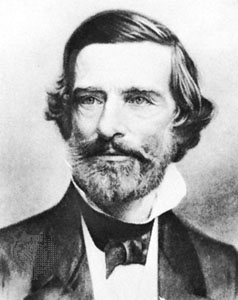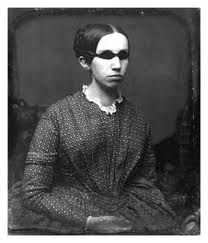Written by Harry Clark
3W, 2M, Multiple Roles, Single Fluid Set
“I stand on the shoulders of Laura Bridgman.” Helen Keller
Fame is a fickle food
Upon a shifting plate
Whose table once a
Guest but not
The second time is set.
Emily Dickinson
Laura Bridgman? Who’s she? I’ d never heard of her when I chanced upon two contemporaneous biographies of Laura in The New York Review of Books. Amazingly, neither biographer knew of the other’s work. How could that be?
Fascinated by the accounts of her renown in the mid 1800s—the first deaf, dumb and blind girl to learn language; second to Queen Victoria as the most famous female in the world; Dickens, Longfellow, Carlyle, Horace Mann captivated by her story; fierce tug-of-wars breaking out between the scientific and religious communities as she represented the sin qua non between competing thoughts about human nature, the nature versus nurture debate.

Dr. Samuel Gridley Howe
All of this excited me, but what compelled me to write of her was the human drama: Laura’s emergence from darkness exhibiting a brilliant mind, an inquisitive spirit, a thirst for understanding her environment, the normal urges and pangs of any teenager. Set against this were the expectations of the man who breathed life into Laura, Dr. Samuel Howe, founder of Boston’s Perkins Institute, and the inventor of the first successful system to teach deaf-blind language. Dr. Howe, a brilliant innovator, believed that Laura should be taught about existential questions—who, what, why are we, what is God, what does God want of me—on his timetable, not Laura’s. And Laura’s “Annie Sullivan”—Mary Swift, a tenacious and dedicated teacher caught between Dr. Howe’s commands and Laura’s burning desire for answers. Against the backdrop of Laura’s international celebrity is the human drama of a questioning child and the battle for her soul between her “adopted” parents, Dr. Howe and Mary Swift.
The play spans from 1837 when Laura, age 7, was discovered by Dr. Samuel Howe, through 1887, Laura’s 50th Jubilee at the Perkins Institute.
I am indebted to Deborah Lavine’s kind guidance and firm but gentle suggestions in getting this work to the stage.
Are Clouds in Heaven?—a question 12-year-old Laura asked of her teacher, Mary Swift.

